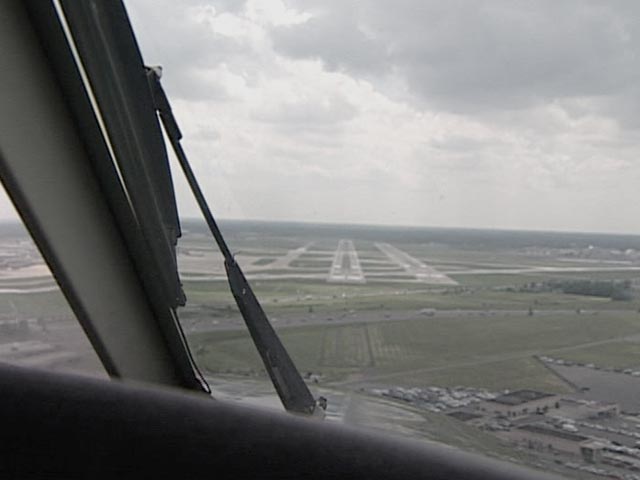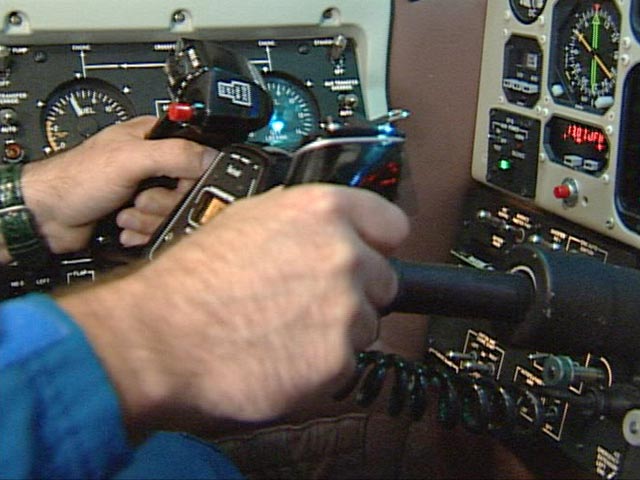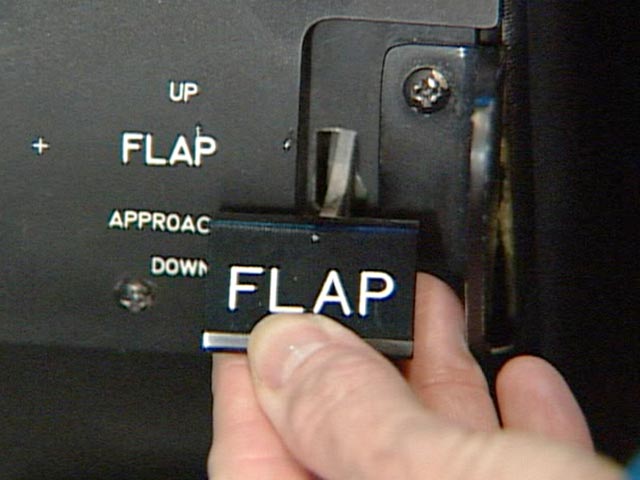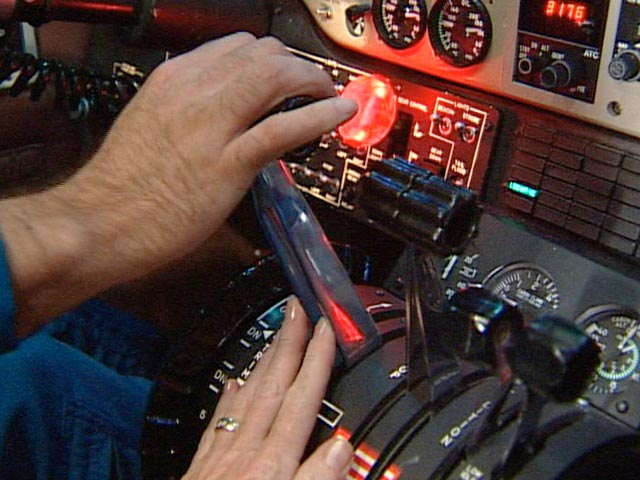A Pilot's Guide to Inflight Icing
Module III - In an Emergency
Recovery
Section: Tail Stall
Start This SectionTail Stall Recovery
Tail stalls usually occur during an approach when flaps are at full extension and/or the aircraft is being flown near the upper speed limit for flap extension.
If flaps are extended and you experience lightening of the controls, difficulty trimming, or buffet in the control column, immediately retract the flaps and maintain or reduce thrust. In general, to recover from a tail stall - Undo What You Just Did.
Pull yoke back
Retract flaps
Maintain or reduce thrust

Tail stalls usually occur on approach
Tail Stall Recovery
Pull yoke back
If you experience a tail stall, immediately pull back on the yoke.
This is opposite to the action that you have been taught and have practiced for recovering from a wing stall. By pulling back on the yoke, you reduce the angle of attack of the tailplane and move it away from the critical angle.
Be aggressive in breaking the stall, but be prepared for significant changes in the pitch behavior of the airplane until the tailplane angle of attack is reduced (e.g., by raising flaps).

Pulling yoke back
Tail Stall Recovery
Retract flaps
Immediately retract flaps to the previous setting.
Retracting the flaps will tend to reduce the angle of attack of the tailplane, moving it away from the critical angle. As the flaps retract, you may need to reduce the back pressure on the yoke to avoid a subsequent wing stall.

Retracting flaps
Tail Stall Recovery
Maintain or reduce thrust
Power additions usually increase airspeed and bring the tailplane closer to the stall.
If in normal operations your aircraft tends to pitch down following a power increase, it probably has a thrust line above the center of gravity. For these aircraft, consider reducing engine power.

Pushing throttles forward
Related Information
Actual Tail Stall and Recovery (NASA Test Flight)